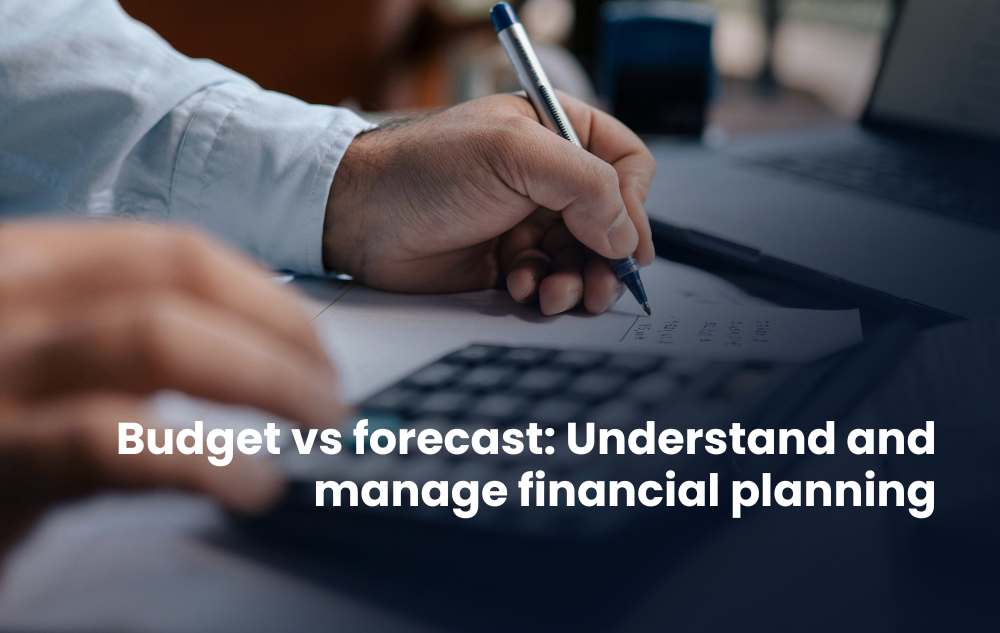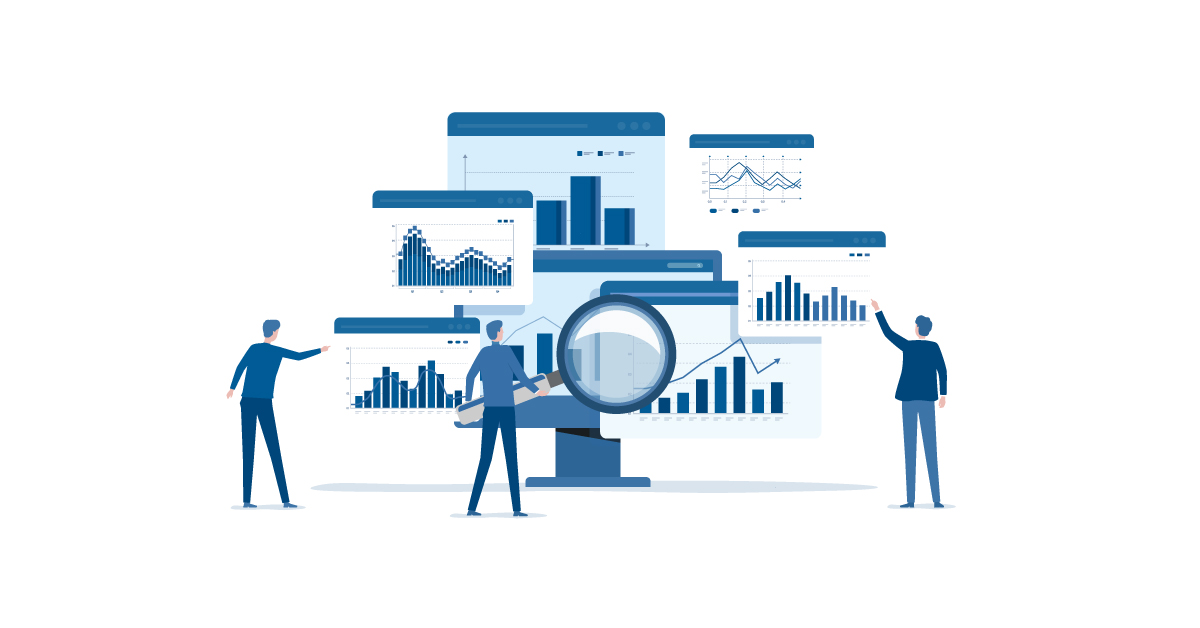How Smarter Budgeting and Forecasting Drive Better Business Decisions

Introduction
Zara sat at her desk late one evening, staring at spreadsheets with a furrowed brow. Her fast-growing tech startup had just hit a cash flow crunch despite strong sales. She realized she had been operating with rough estimates, gut feel, and hope. That night, she promised herself never to make another financial decision without clarity. She began exploring smarter Budgeting and Forecasting.
Months later, her startup looked completely different. Liquidity was steady, expenses were under control, and financial decisions were made with confidence instead of guesswork.
That transformation, from uncertainty to clarity, reflects the real power of smarter budgeting and forecasting. In today’s volatile world, relying on instinct alone isn’t enough. Every successful business needs a structured, data-driven approach that helps leaders anticipate, adjust, and act strategically.
This article explores how smarter budgeting and forecasting transform financial decision-making, improve control, and empower business growth.
Why Traditional Budgeting Often Fails
1. Static Plans in a Dynamic World
Many businesses build a budget at the start of the year and never revisit it. But the market keeps changing. Costs fluctuate, customer demand evolves, and economic shifts happen overnight. A static plan quickly becomes irrelevant.
2. Overreliance on Last Year’s Numbers
It’s tempting to take last year’s figures and simply adjust them by a percentage. But this habit ignores market realities such as inflation, supply chain issues, or new competition. Relying on outdated data leads to flawed planning.
3. Lack of Real-Time Oversight
Without ongoing monitoring, problems often go unnoticed. A small expense overrun or delayed receivable can snowball into a serious cash flow issue before anyone catches it.
4. Weak Scenario Planning
Many companies fail to consider “what if” possibilities. What if sales drop by 20 percent? What if raw material prices rise? Without preparing for these situations, unexpected challenges can derail operations.
Traditional budgeting fails because it’s static and backward-looking. The solution lies in smarter budgeting and forecasting, which adapts continuously and provides a clear, forward-focused view.
What Is Smarter Budgeting and Forecasting?
Budgeting is the process of estimating future revenues, expenses, and cash flows, while forecasting predicts financial outcomes based on data, trends, and assumptions.
When we say smarter, we mean an upgraded, dynamic approach. It’s proactive, data-driven, and flexible. It uses technology, real-time inputs, and business intelligence to guide financial decisions continuously.
In essence, smarter budgeting and forecasting turn finance into a strategic compass rather than a static report.
The Benefits: Why It’s the Key to Confident Financial Decisions
1. Early Detection of Cash Flow Risks
Smart forecasting identifies liquidity challenges before they occur. Instead of reacting to crises, businesses can plan solutions early.
2. Intelligent Capital Allocation
Accurate forecasts help leaders direct funds to the right places. Resources go where they bring the best returns, avoiding waste in low-performing areas.
3. Realistic Performance Targets
By forecasting realistically, businesses can set measurable and attainable goals that motivate teams instead of setting them up for failure.
4. Improved Stakeholder Confidence
Transparent financial projections inspire trust. Investors, lenders, and board members prefer working with businesses that demonstrate financial foresight.
5. Faster Adaptation
When markets change, a smart model adjusts quickly. Forecasts can be updated to reflect new realities, helping leaders make quick, informed decisions.
6. Stronger Organizational Alignment
When every department understands how its budget connects to the bigger picture, collaboration and accountability grow.
Simply put, smarter budgeting and forecasting bring clarity, agility, and confidence to every financial move.
Core Principles of Smart Budgeting and Forecasting
To make this system work effectively, businesses should follow key principles:
-
Base assumptions on data. Always use verified data, not intuition. Historical performance, industry benchmarks, and market research provide a reliable foundation.
-
Adopt rolling forecasts. Update projections periodically instead of relying on annual budgets that quickly lose relevance.
-
Build scenarios. Explore multiple outcomes, best, base, and worst cases to stay ready for uncertainty.
-
Analyze variances regularly. Compare actual performance against forecasts and adjust accordingly.
-
Encourage collaboration. Finance teams should work closely with sales, operations, and HR to create shared ownership of financial goals.
-
Automate processes. Use technology to integrate data, reduce manual errors, and produce accurate insights in real time.
Step-by-Step: How to Build a Smarter Budgeting and Forecasting System
Step 1: Gather Historical Data and Define the Baseline
Collect the last few years of financial records, focusing on revenue, costs, and cash flows. Identify trends, recurring patterns, and one-off anomalies. A clean, accurate baseline is essential.
Step 2: Identify Key Drivers and Assumptions
Define what truly drives your business. It could be customer numbers, pricing, production costs, or marketing spend. Build your assumptions around these key metrics.
Step 3: Develop Forecast Models and Scenarios
Create base, optimistic, and conservative forecasts. For each, analyze how changes in key drivers will affect performance. This helps leaders understand potential risks and opportunities.
Step 4: Align Budgets with Forecasts
Budgets should reflect forecasted realities. Allocate spending where growth is expected and limit expenditure where returns are uncertain. Include contingency funds for unexpected events.
Step 5: Implement Rolling Forecasting
Review and update forecasts monthly or quarterly. Each new period should extend your planning horizon, ensuring continuous forward visibility.
Step 6: Monitor and Improve
Compare forecasts against actual results. When variances appear, analyze them deeply. Use insights to improve the accuracy of future forecasts.
Step 7: Embed a Culture of Accountability
Financial clarity must become everyone’s responsibility. Encourage managers to own their budgets and participate actively in forecasting discussions.
Real-World Illustration: From Struggle to Control
Consider a mid-sized e-commerce company in the UAE named “Elite Goods.” In its early years, the business faced frequent cash shortages even though revenue was growing fast. Payments were delayed, and unexpected expenses piled up.
After adopting smarter budgeting and forecasting, they introduced a rolling financial model updated every month. They simulated various cost and sales scenarios, anticipating supply price changes and marketing expenses.
As a result, the management team could see problems in advance. When sales dipped one quarter, they adjusted procurement schedules and cut discretionary costs. Within two quarters, the business achieved stable cash flow, optimized spending, and improved profitability.
Their transformation proved that smarter budgeting and forecasting are not just financial exercises; they are the foundation of confident leadership.
Different Approaches to Budgeting
Several budgeting methods can support a smart forecasting framework. Each has its own strengths and ideal use cases.
-
Incremental Budgeting: This method takes the previous year’s numbers and adjusts them slightly, suitable for stable and predictable environments.
-
Zero-Based Budgeting: Every cost is justified from scratch each year. This approach is best for eliminating waste and ensuring every expense adds value.
-
Activity-Based Budgeting: Spending is allocated based on specific business activities. It works well when you want to link cost to performance outcomes.
-
Value-Proposition Budgeting: Budgets focus on areas that create the most customer or business value. It prioritizes strategic impact over routine expenses.
-
Flexible or Dynamic Budgeting: This adjusts spending automatically based on performance or activity levels. It’s perfect for companies facing fluctuating demand.
Each method can be combined to build a smarter budgeting and forecasting framework tailored to your business type.
Tools and Technology that Enable Smart Forecasting
Technology is a vital enabler of smarter financial planning. Here are key tools and systems that make forecasting faster, more accurate, and more insightful:
-
Cloud-based budgeting software that provides real-time dashboards and easy collaboration.
-
Automation tools that connect accounting systems, sales data, and inventory for up-to-date reporting.
-
Predictive analytics powered by AI to identify trends, anomalies, and emerging risks.
-
Visualization platforms that turn complex data into easy-to-read charts and summaries.
When financial planning becomes digital and integrated, decision-makers gain instant visibility and confidence.
Overcoming Common Challenges
Implementing smarter budgeting can face several hurdles. Here’s how to overcome them effectively:
1. Resistance to Change
Teams accustomed to traditional processes might hesitate to adopt new systems. Start small, show early successes, and expand gradually.
2. Poor Data Quality
Inconsistent data leads to inaccurate forecasts. Clean your data regularly and maintain disciplined reporting standards.
3. Overly Complex Models
Forecasting models should be detailed but not overwhelming. Focus on key variables that truly influence outcomes.
4. Overconfidence in Predictions
Forecasts are tools for guidance, not guarantees. Always include risk factors and alternative scenarios.
5. Weak Accountability
Finance teams cannot forecast alone. Engage department heads and ensure everyone contributes to the financial planning process.
Implementation Roadmap: Turning Strategy into Action
A structured roadmap ensures smooth implementation and adoption.
Phase 1 (Months 1–2): Foundation
Audit financial history, clean up records, and define your key metrics. Select software and prepare your model framework.
Phase 2 (Months 3–4): Pilot and Design
Develop pilot forecasts for selected departments. Test assumptions and validate outputs against real data.
Phase 3 (Months 5–6): Organization-Wide Rollout
Train teams, integrate forecasting with budgeting, and establish monthly review cycles.
Phase 4 (Months 7–9): Optimization and Review
Refine models, address variances, and make forecasting a regular part of business planning. By the end of this phase, smarter forecasting becomes an embedded culture.
Best Practices for Long-Term Success
-
Keep forecasting horizons realistic, usually 12 to 18 months ahead.
-
Build models using business drivers, not just expense line items.
-
Encourage collaboration across departments for more accurate inputs.
-
Turn forecasting reviews into learning sessions that refine future assumptions.
-
Maintain transparency and share results with key stakeholders.
-
Regularly integrate external market data to keep forecasts relevant.
Consistent execution of these practices keeps your smarter budgeting and forecasting framework evolving with your business.
Conclusion
Zara’s journey mirrors that of countless business owners who once relied on guesswork but now lead with data-driven clarity. Adopting smarter budgeting and forecasting doesn’t just refine your numbers; it transforms your mindset. It helps you prepare instead of react, plan instead of worry, and decide with conviction instead of doubt.
Your financial plan should live, breathe, and evolve as your business does. That’s what makes it “smart.”
At Dubai Business and Tax Advisors, we believe financial planning isn’t merely about compliance. It’s about creating a vision, setting direction, and empowering decisions that drive growth. Through smarter budgeting and forecasting, businesses can achieve stability, agility, and confidence in every move they make.




.webp)
